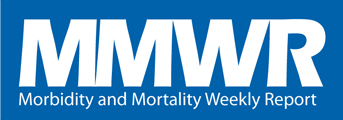MMWR News Synopsis for June 23, 2016
Evaluation of the Impact of National HIV Testing Day — United States, 2011–2014
National Center for HIV/AIDS, Viral Hepatitis, STD, and TB Prevention
404-639-8895
NCHHSTPMediaTeam@cdc.gov
Promoting National HIV Testing Day can increase the number of new HIV-positive diagnoses, including HIV infections among target populations at high risk for HIV infection. National HIV Testing Day has been effective in reaching individuals who do not know their HIV status and in detecting newly identified HIV-infected persons. Evaluation of CDC-funded HIV testing events conducted during 2011–2014 revealed an increase in total HIV testing events and the number of newly identified HIV infections for people age 20 years and older; across all gender groups (male, female and transgender); MSM and heterosexuals; and black, white, and Hispanic/Latino racial/ethnic groups. National HIV Testing Day campaigns have been successful in effectively targeting groups disproportionately affected by HIV.
Health Care Use and HIV Testing in Physicians’ Offices of Males Aged 15–39 Years — United States, 2009–2012
National Center for HIV/AIDS, Viral Hepatitis, STD, and TB Prevention
404-639-8895
NCHHSTPMediaTeam@cdc.gov
HIV testing was performed during just 1 percent of 15- to 39-year-old males’ physician office visits from 2009 to 2012, despite this population’s frequent physician visits during the timeframe. CDC recommends routine HIV testing of adults and adolescents in the United States. In 2014, 75 percent of males reported at least one visit to a health care office during the previous year. Yet in that year, only 36 percent of men age 18 and older reported having an HIV test. This analysis finds higher testing rates among black males (2.71 percent) and Hispanic males (1.42 percent) compared with white males (0.72 percent). Several factors may contribute to routine HIV tests not being conducted in physician offices among this population, including providers’ lack of knowledge of CDC’s universal testing recommendation, belief that their patients are not at risk, and belief that HIV testing is the responsibility of other health care professionals in different settings.
State and Local Comprehensive Smoke-Free Laws for Worksites, Restaurants, and Bars — United States, 2015
CDC Media Relations
404-639-3286
Continued efforts to promote state and local comprehensive smoke-free laws are critical to protect nonsmokers from the harmful effects of secondhand smoke in the places they live, work, and gather. Considerable progress has been made in the adoption of comprehensive smoke-free laws in indoor public places at the state and local level over the past two decades. However, statewide smoke-free progress has stalled in recent years, and no states in the southeast have a statewide comprehensive smoke-free law. The number of states (and the District of Columbia) with statewide comprehensive smoke-free laws in effect increased from zero in 2000 to 26 in 2010 and to 28 by June 9, 2016. Completely eliminating indoor smoking is the only way to protect people from involuntary exposure to secondhand smoke. Separating smokers from nonsmokers, cleaning the air, and ventilating buildings cannot eliminate secondhand smoke exposure.
QuickStats:
Prevalence of Abnormal Cholesterol Among Young Persons Aged 6–19 Years, by Sex and Weight Status — National Health and Nutrition Examination Survey, United States, 2011–2014
###

